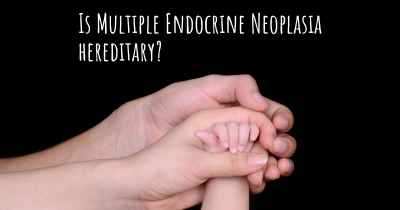What is the history of Multiple Endocrine Neoplasia?
When was Multiple Endocrine Neoplasia discovered? What is the story of this discovery? Was it coincidence or not?

Multiple Endocrine Neoplasia (MEN) is a rare genetic disorder characterized by the development of tumors in multiple endocrine glands. It was first described in the medical literature in the early 20th century, but it wasn't until the 1950s that the term "Multiple Endocrine Neoplasia" was coined by Dr. Sipple to describe a syndrome involving tumors of the thyroid, parathyroid, and adrenal glands.
The history of MEN can be traced back to the discovery of the endocrine system and the understanding of its role in regulating various bodily functions. In the late 19th century, scientists began to identify different endocrine glands and their associated hormones. This laid the foundation for understanding the complex interplay between these glands and the development of diseases related to their dysfunction.
The first recognized form of MEN, now known as MEN1, was identified in the 1920s by Dr. Erdheim, who described a family with multiple cases of parathyroid and pancreatic tumors. However, it wasn't until the 1950s that Dr. Sipple expanded the concept of MEN to include tumors of the thyroid and adrenal glands as well.
MEN2, another form of the disorder, was first identified in the 1960s by Dr. Sipple and Dr. Williams. They described families with medullary thyroid carcinoma (MTC) and pheochromocytoma, a tumor of the adrenal glands. Further research led to the recognition of two subtypes of MEN2: MEN2A and MEN2B.
In the 1980s, the genetic basis of MEN was discovered. Scientists identified mutations in specific genes that were responsible for the development of MEN1 and MEN2. The MEN1 gene, located on chromosome 11, was found to be mutated in individuals with MEN1, while the RET gene, located on chromosome 10, was found to be mutated in individuals with MEN2.
Advancements in genetic testing and molecular biology techniques have allowed for better diagnosis and management of MEN. Genetic testing can now identify individuals who carry the mutations associated with MEN, enabling early detection and intervention. Additionally, the understanding of the molecular pathways involved in MEN has led to the development of targeted therapies for certain tumors associated with the disorder.
Today, MEN remains a rare condition, affecting approximately 1 in 30,000 individuals. It is important for individuals with a family history of MEN or symptoms suggestive of the disorder to undergo appropriate medical evaluation and genetic testing. Early detection and treatment can significantly improve outcomes and quality of life for individuals with MEN.
Posted Oct 25, 2017 by Mrcperk 2000








